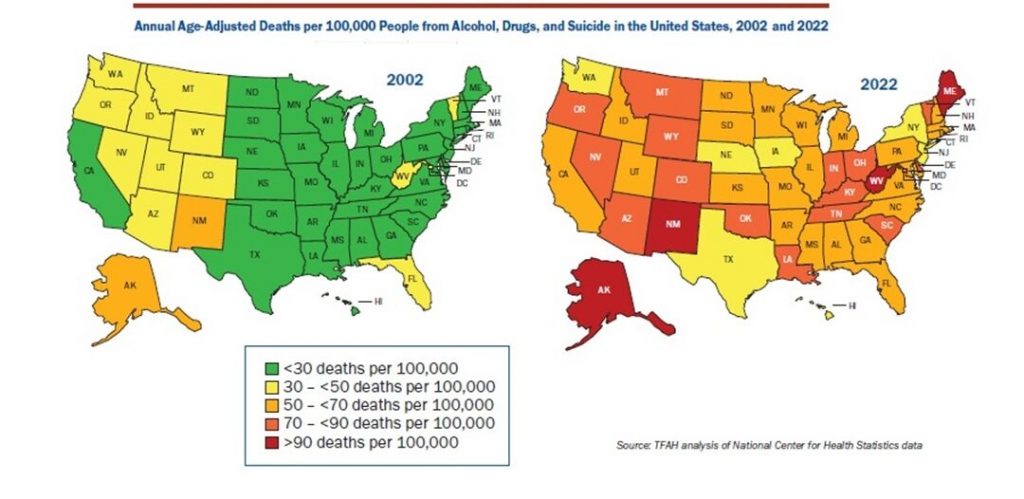(Radio Iowa) – Iowa is mirroring the national trend with a slight drop in deaths due to alcohol, drugs, and suicide, according to a report from a non-partisan public health policy organization.
Dr. Nadine Gracia, president and CEO of Trust for America’s Health, says figures for 2022 show the first substantial drop in those deaths in five years, though there’s still much work to be done. She says the long-term trend is still alarmingly high.
“In the state of Iowa, the data show that there were over 1,600 individuals who died due to alcohol, drugs and suicide,” Gracia says. “That was about a 1% decrease from the previous year. We saw decreases in alcohol induced death and drug overdose deaths, but there was actually an increase in suicide deaths by 6%.”
Over the past two decades, the study finds deaths from alcohol, drugs, and suicide in the U.S. increased by 142 percent. Gracia says drug overdoses, in particular, rose relentlessly in the past ten years as synthetic opioids gained in popularity. She says rural residents appear to be especially at risk.

Trust for America’s Health graphic
“We do see, for example, higher death rates among people who died from suicide from people who are living in rural areas, people who are men,” Gracia says. “For drug overdose deaths, we also see higher rates for adults who are ages 35 to 54, as well as males.”
In the report, “Pain in the Nation 2024: the Epidemic of Alcohol, Drug, and Suicide Deaths,” researchers found a slight drop in the combined rate of alcohol, drug, and suicide deaths, but that rate is still more than double what it was 20 years ago. Gracia points to a lack of access to treatment options.
“You look at the state of Iowa, for example, about 59% of the state’s residents actually live in an area that has a mental health care shortage,” Gracia says, “so we need to assure that we’re bolstering and increasing access to mental health care services for anyone and everyone who needs them.”
To save lives, she says more work needs to be done to implement prevention and harm reduction strategies, and to ensure access to mental and behavioral health care.





 For more information and for the number of signatures required for each office, please contact the Auditor’s office at 712-243-4570
For more information and for the number of signatures required for each office, please contact the Auditor’s office at 712-243-4570

